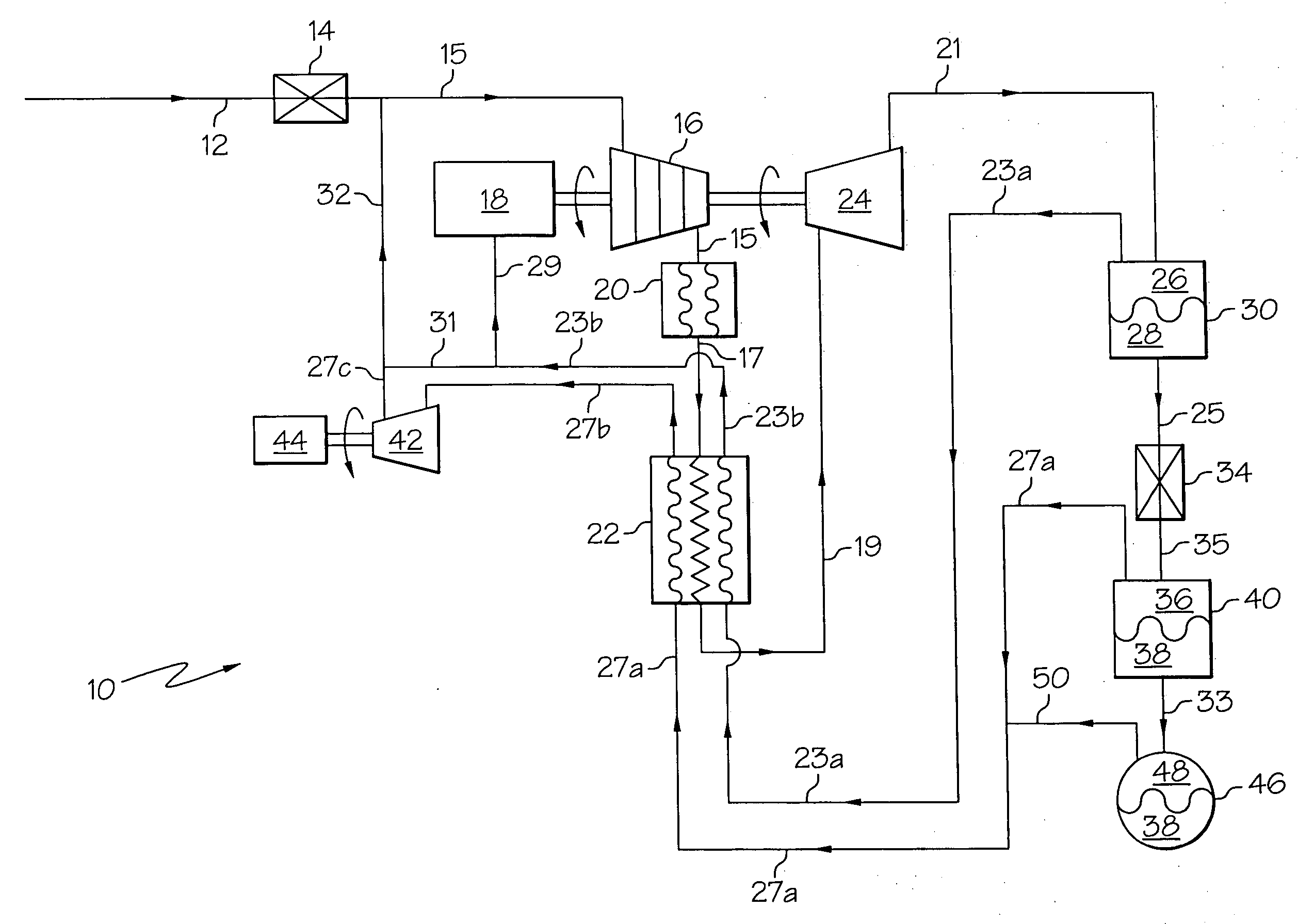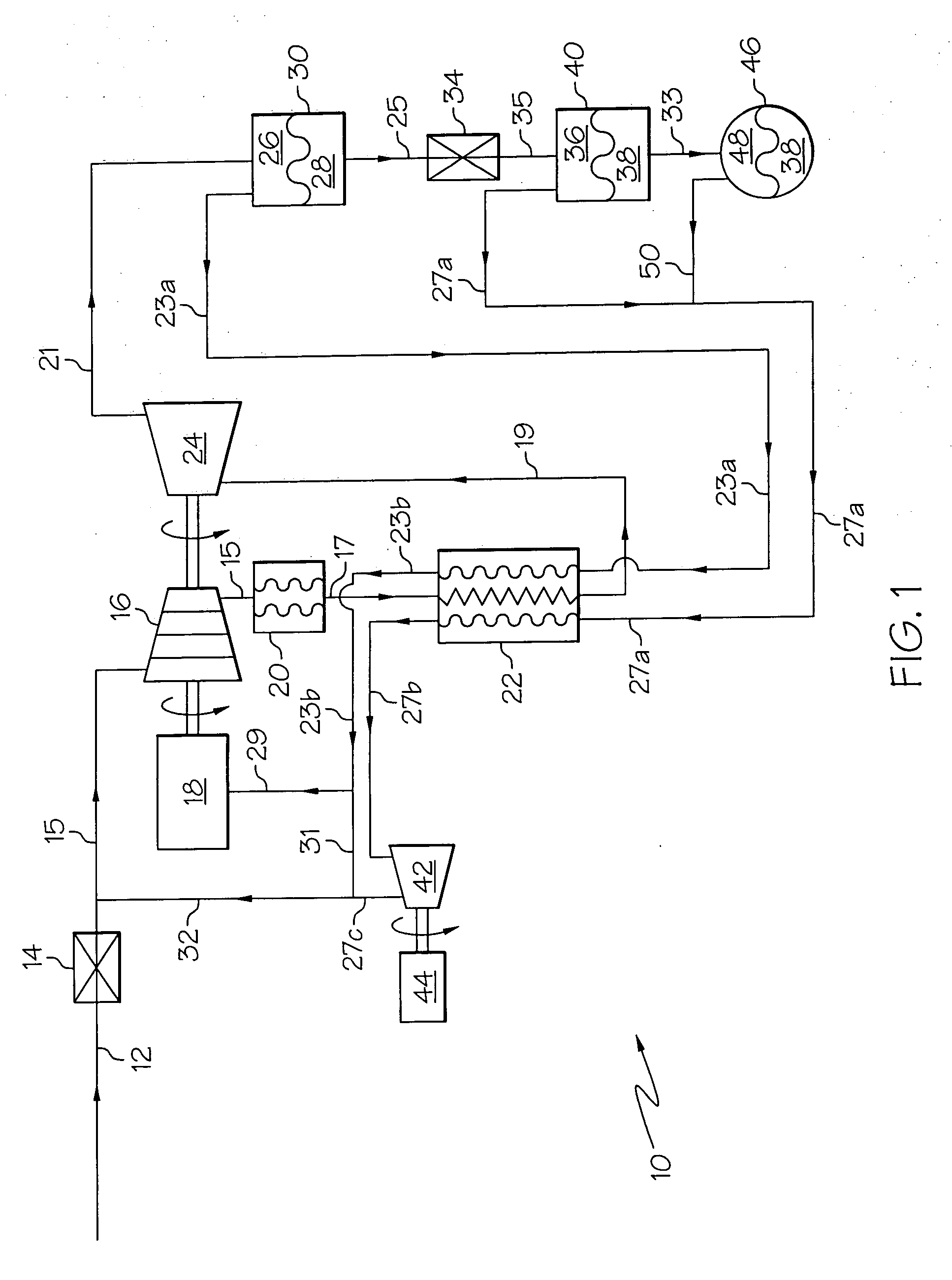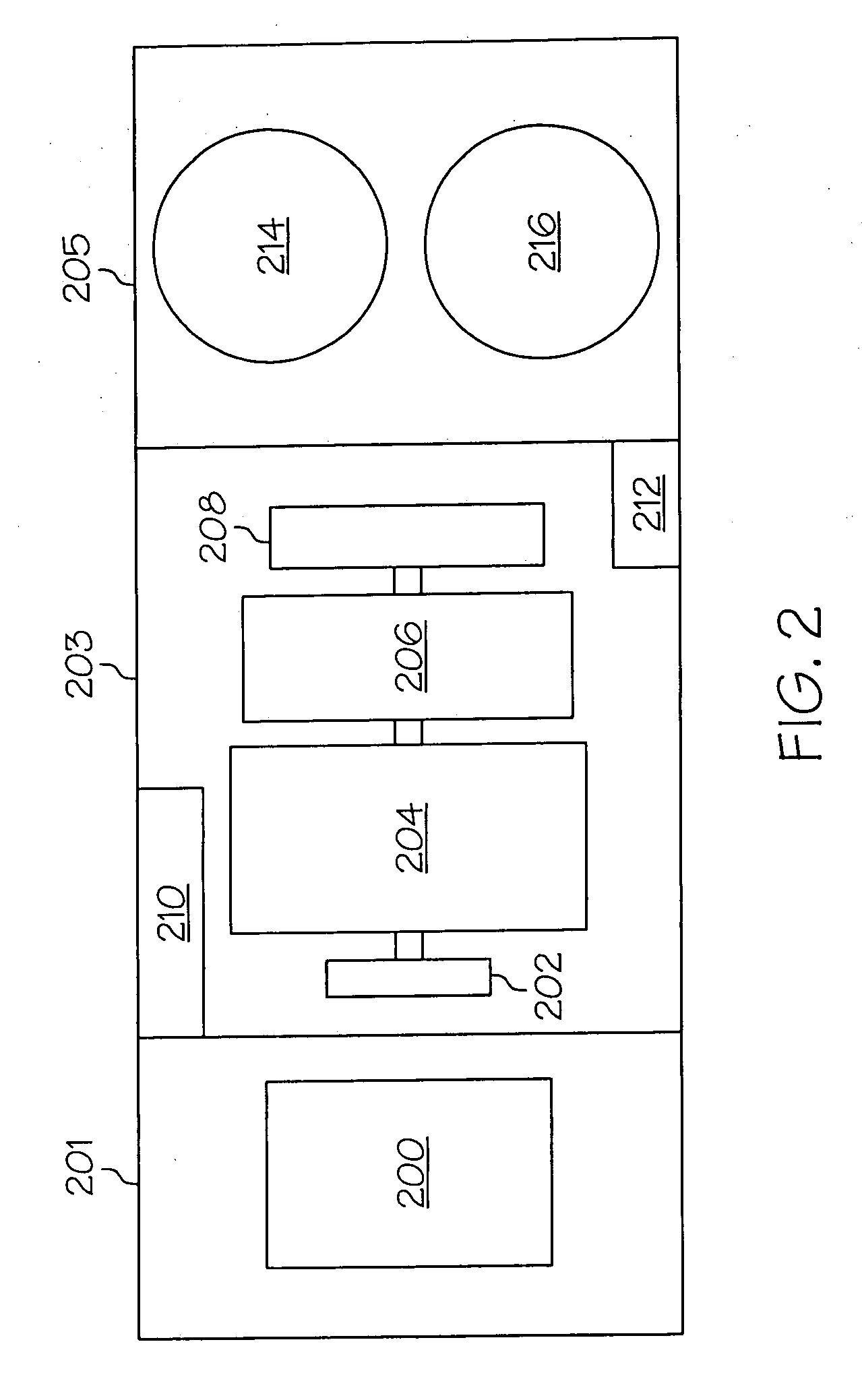Compact, modular method and apparatus for liquefying natural gas
a natural gas and modular technology, applied in the field of cryogenic refrigeration cycles, can solve the problems of complicated dispersion of gas, high cost and maintenance costs of such plants, and the inability to produce liquid from methane with high pressure alon
- Summary
- Abstract
- Description
- Claims
- Application Information
AI Technical Summary
Benefits of technology
Problems solved by technology
Method used
Image
Examples
case 2b
[0057] Case 2b of TABLE 1 summarizes typical cycle conditions using a typical “pipeline quality” natural gas as the feed gas, consisting of 98.00% methane gas, 0.75% ethane, 0.50% propane, 0.20% normal butane, 0.25% nitrogen and 0.30% carbon dioxide. Case 2c of TABLE 1 summarizes typical cycle conditions using a representative field gas that is rich in carbon dioxide as the feed gas, consisting of 88.00% methane, 0.75% ethane, 0.50% propane, 0.20% normal butane, 0.25% nitrogen, and 10.30% carbon dioxide. Case 2d summarizes typical cycle conditions using a representative field gas that is also rich in nitrogen as the feed gas, consisting of 88.00% methane, 0.75% ethane, 0.50% propane, 0.20% normal butane, 10.25% nitrogen, and 0.30% carbon dioxide.
TABLE 1CompressorExpanderLNGDischargeInletExpander DischargeThrottle Valve OutletProductionPressTFlowPressTPressTempVaporLiquidPressTempVaporLiquidLiquidPower OutputCasepsia° F.mmscfdpsia° F.psia° F.%%psia° F.%%%Hp12994.7803.5702964.7−29.012...
PUM
 Login to View More
Login to View More Abstract
Description
Claims
Application Information
 Login to View More
Login to View More - R&D
- Intellectual Property
- Life Sciences
- Materials
- Tech Scout
- Unparalleled Data Quality
- Higher Quality Content
- 60% Fewer Hallucinations
Browse by: Latest US Patents, China's latest patents, Technical Efficacy Thesaurus, Application Domain, Technology Topic, Popular Technical Reports.
© 2025 PatSnap. All rights reserved.Legal|Privacy policy|Modern Slavery Act Transparency Statement|Sitemap|About US| Contact US: help@patsnap.com



